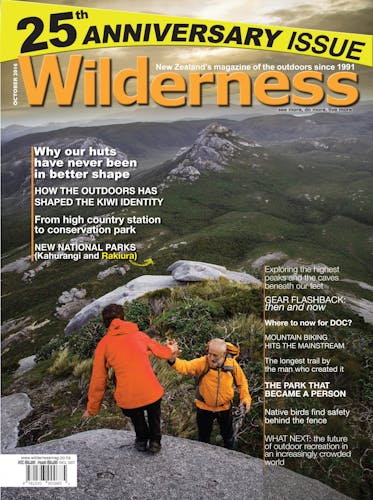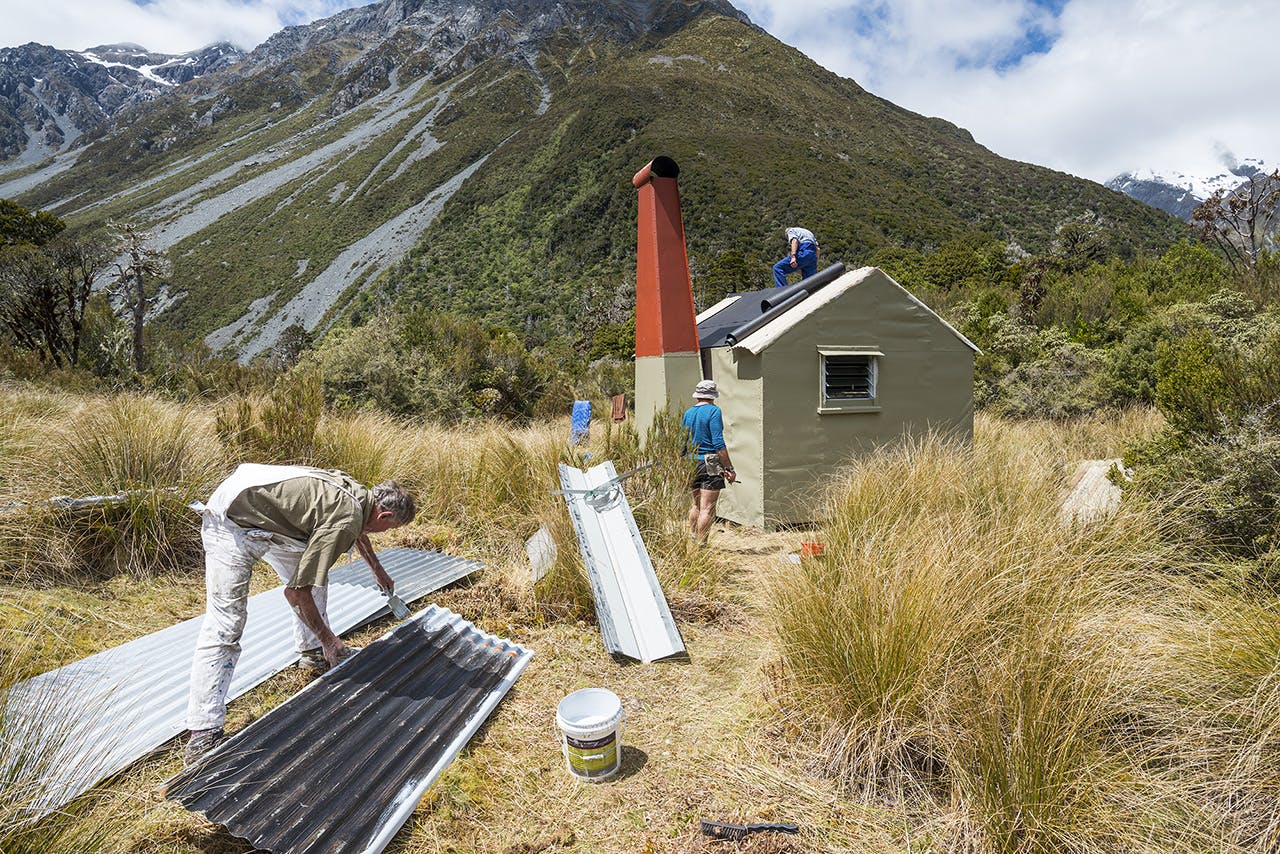Unwilling to stand by and watch as huts and tracks fall into disrepair, like-minded trampers have come together to save remote backcountry structures.
By Andrew Buglass
In the early 1970s, New Zealanders had a dream network of high-country huts and tracks, unparalleled anywhere in the world, mostly free to use outside of national parks and fully maintained.
Then, in the mid-1980s, things started to change. Neo-liberal economics, chronic underfunding, and increasingly prohibitive building standards and compliance codes led to a gradual and pervasive decline in the condition of many of the more remote, less-used and basic facilities. By the end of the 1990s, DOC’s approach was to remove rather than repair when things reached a certain stage.
A few enlightened individuals who recognised and understood the problem began adopting the odd hut or track. But it was very ad-hoc. In 2004, the Remote Huts website was established to profile at-risk huts in Westland, provide up-to-date route information, and to identify maintenance needs, so that members of the community could, if they wished, undertake repairs. The online group Permolat was set up in conjunction with the website and was instantly successful in attracting a diverse and scattered group of high-country recreationalists. This soon evolved into a functional collective and vocal lobby group.
In 2006, the first ‘maintain by community’ contract for Scottys Bivouac in the Taipo catchment was signed. In the ensuing decade, numerous projects have followed and most of the at-risk structures in the Remote Huts patch have received maintenance. Most of the overgrown access tracks have been reopened, and the Remote Huts website is now a standard resource for high country users.
A Ruahine users group joined the Permolat platform in 2012, and groups from other regions have looked at the model and sought advice for their own regional initiatives.
This has coincided with a positive culture change within DOC, and probably wouldn’t have been as successful without it. The Community Conservation Partnership Fund established by the Government in 2014 and its allocating body, the Outdoor Recreation Consortium, now provides a solid funding base for volunteer groups and clubs doing high country and backcountry projects. Grants distributed to groups around the country resulted in 2015 being the most productive year ever in terms of projects undertaken. There are still areas of tension and issues to work through, mostly regulatory, around health and safety. Also requiring attention are building code protocols, which in some cases are excessive or unnecessary for the very basic structures and facilities being worked on. But there is plenty of goodwill at DOC’s executive level to address and simplify these issues.
There has been some talk about the community sector taking over maintenance of all DOC’s minimal maintenance huts – some 500 in total. This will certainly require a far greater level of organisation and resourcing, and with this comes the danger that the efficacy, creativity and energy that epitomises volunteer activity will end up being stifled in the same web of bureaucracy and risk aversion that hampers DOC. Let’s hope not.
Regardless of the challenges, the future holds much promise for volunteer hut and track maintenance in Aotearoa.
– Andrew Buglass founded www.remotehuts.co.nz website






